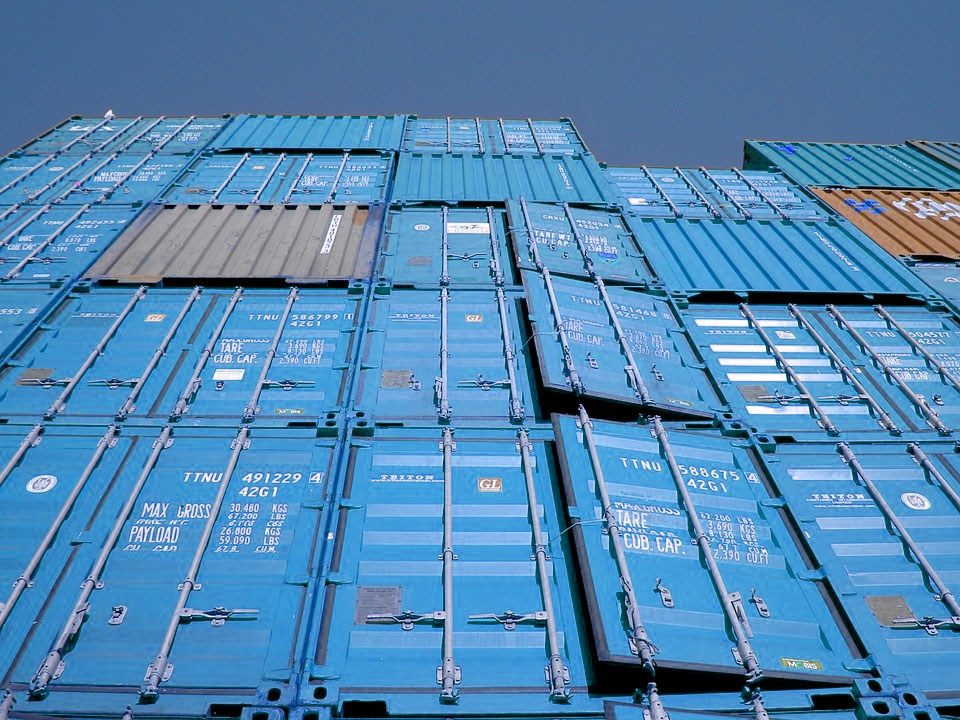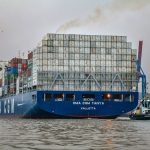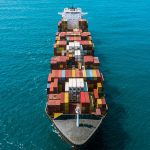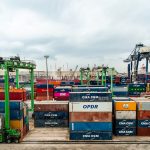- A shortage of containers and unexpected demand for delivery by sea has driven a surge in international freight rates in the second half of the year
- The shortfall is driving up costs for some Asian businesses, but proving a boon for Chinese container manufacturers who are running close to full capacity
- Atlas Furniture Asia customers are now booking containers 30 – 45 days in advance of cargo-ready date (C.R.D.) in order to be assured a container

Global trade is being slowed down by the sluggish recovery of China’s logistics sector, with a build-up of containers at the country’s ports creating problems around the world.
Subsequent to the outbreak of the 2019-nCoV coronavirus that began in China’s Wuhan province, not all of the country’s workers have returned to their jobs after the extended break for the lunar new year holiday. This has slowed the rate at which the logistics sector is able to operate.
China is home to several of the world’s largest container ports, including Shanghai, Shenzhen and Ningbo-Zhoushan. With these ports unable to process containers at the normal rate, the availability of units for use at other major global ports has been reduced.
This has meant that anyone attempting to ship commodities by container has experienced delays.
(Source: Metal Bulletin)
 The peak volumes of Chinese goods headed to the U.S. since July has led to overwhelmed U.S. ports and significant congestion and delays in returning empty containers to Asia. And this acute equipment shortage is leading to more scrutiny from regulators on multiple fronts.
The peak volumes of Chinese goods headed to the U.S. since July has led to overwhelmed U.S. ports and significant congestion and delays in returning empty containers to Asia. And this acute equipment shortage is leading to more scrutiny from regulators on multiple fronts.
The FMC has received complaints that carriers are purposely refusing to ship U.S. exports in favor of the quicker turnaround of empty containers back to China. The FMC is also being petitioned to suspend detention and demurrage fees – levied by carriers as a way to expedite the return of empty containers – for congestion and delays that shippers and truckers say are out of their control.
The South Korean government has also taken steps to intervene, requesting that carriers add more capacity to its trade lanes where rates are climbing, and discouraging carriers from skipping port calls and allocating equipment to the more lucrative transpacific lanes.
(Source: EPS News)
 Last week, Hapag-Lloyd described the global container shortage as a “black swan” event, noting the “strongest increase in 40ft demand, following one of the strongest decreases in demand ever” within six months.
Last week, Hapag-Lloyd described the global container shortage as a “black swan” event, noting the “strongest increase in 40ft demand, following one of the strongest decreases in demand ever” within six months.
The carrier suspended bookings of agricultural products from North America so it could prioritise repositioning equipment to the more lucrative Asian export market, and ONE executive Jeremy Nixon warned of increasingly costly empty container repositioning last year.
Intra-Asia is also feeling the brunt of the huge demand in the US for Asian exports, and the bumper profits available to carriers on transpacific trades.
(Source: The Load Star)
 Shippers are incensed that carriers are “taking advantage of their stranglehold on the supply chain” by loading on more fees and surcharges.
Shippers are incensed that carriers are “taking advantage of their stranglehold on the supply chain” by loading on more fees and surcharges.
“They are really kicking us while we are down,” said one forwarder.
Another UK forwarder was equally angry with the carriers’ treatment of its customers, but also blamed the country’s container ports for what he considered to be a serious threat to businesses.
“For every problem, there is a surcharge,” he said. “This massively punishes SMEs already suffering due to mismanagement at Felixstowe and other ports.”
Christoph Baumeister, senior trade manager, Asia/ISC – Europe at Flexport, agreed: “Equipment is becoming rarer and carriers cannot always release containers under premium rates.
“Serious port congestion at the US west coast and the UK presents even more of a challenge. Schedule reliability will drop further – the on-time performance of certain loops is already below 40%,” he added.
(Source: The Load Star)
 Unloading holdups in China and delays on the return of vessels when the outbreak was largely limited to Asia have left shippers waiting for hundreds of thousands of containers to move their products. But as the disease goes global, the port of Fuzhou is starting to quarantine incoming ships from countries including the U.S. for 14 days. That threatens to exacerbate the crunch.
Unloading holdups in China and delays on the return of vessels when the outbreak was largely limited to Asia have left shippers waiting for hundreds of thousands of containers to move their products. But as the disease goes global, the port of Fuzhou is starting to quarantine incoming ships from countries including the U.S. for 14 days. That threatens to exacerbate the crunch.
The availability of cargo containers at Hamburg, Rotterdam and Antwerp in Europe and Long Beach and Los Angeles in the U.S. are at the lowest levels recorded, according to a Bloomberg report. Imports to the port of Los Angeles and Long Beach, which have a 35% share of containers coming into the U.S., fell as much as 13% in the first two months of the first quarter, Bloomberg Intelligence analyst Lee Klaskow said Wednesday in a report. International volume could begin to increase as Chinese exports pick up, he said.
Container throughput in the port of Shanghai fell 19.5% in February from a year earlier, with outbound containers slumping 25%, according to data from the Municipal Statistics Bureau on March 19…
(Source: MH&L News)
 Containers are a finite resource, and with the US being the trade willing to pay most for a container, many lines won’t move a container westbound when it can be moved on the US trades for up to four times the price.
Containers are a finite resource, and with the US being the trade willing to pay most for a container, many lines won’t move a container westbound when it can be moved on the US trades for up to four times the price.
The situation has been exacerbated because so many empties in the UK and Europe have been stranded after the carriers withdrew extensive amounts of capacity to match anticipated weak demand during and after COVID-19 lockdowns, leaving containers stranded at the wrong end of the supply chain.
Container availability varies by type and locations, with many in short supply across many Asian hubs. The situation has been particularly acute in Shanghai, Shenzhen, Ningbo, Dalian, Tianjin, Qingdao, Xiamen, and Fuzhou.
(Source: Norman Global
What’s the solution?
 Solving the trade imbalance between China-EU is certainly not an overnight task. Therefore, the need for returning empty containers cannot get avoided in the long term. Nowadays, about one-third of the containers transported are empty; a percentage equal to 60 million a year. The consequences of this situation can be easily estimated. The proper scheduling of containers between cargo terminals requires cooperation among shippers as well as train platform companies. Good planning can help reduce the demurrage of containers on the one hand and shortage on the other.
Solving the trade imbalance between China-EU is certainly not an overnight task. Therefore, the need for returning empty containers cannot get avoided in the long term. Nowadays, about one-third of the containers transported are empty; a percentage equal to 60 million a year. The consequences of this situation can be easily estimated. The proper scheduling of containers between cargo terminals requires cooperation among shippers as well as train platform companies. Good planning can help reduce the demurrage of containers on the one hand and shortage on the other.
Nevertheless, it is difficult to achieve a significant reduction in the cost of transporting empty containers when the imbalance of westbound and eastbound transportation is not addressed. On this occasion, some new technologies created by logistics companies (such as folding containers or containers made with other materials, such as plastic composites) might be feasible tools to realise the low-cost but highly-efficient transporting of empty containers to China.
(Source: RailFreight.com)
